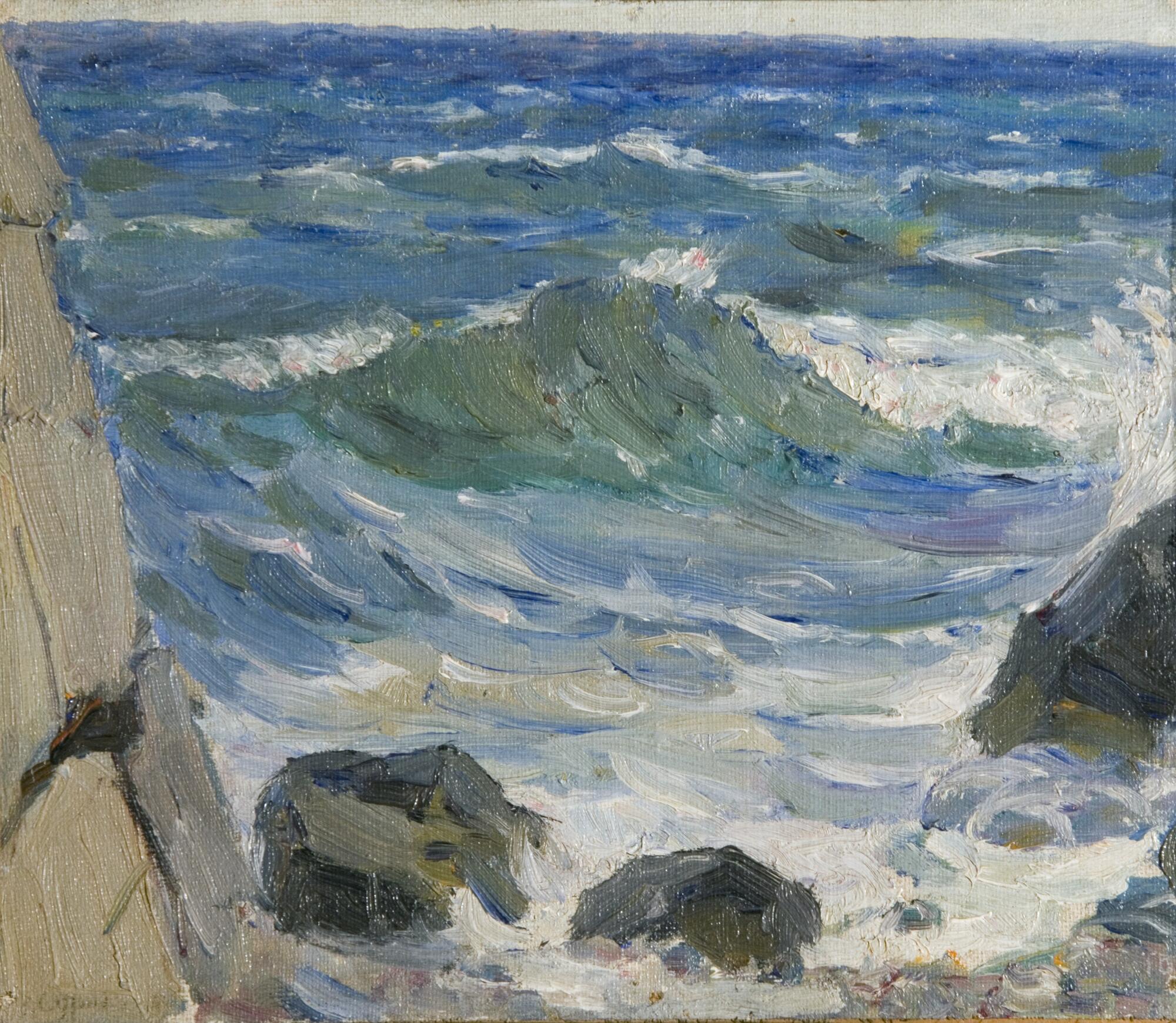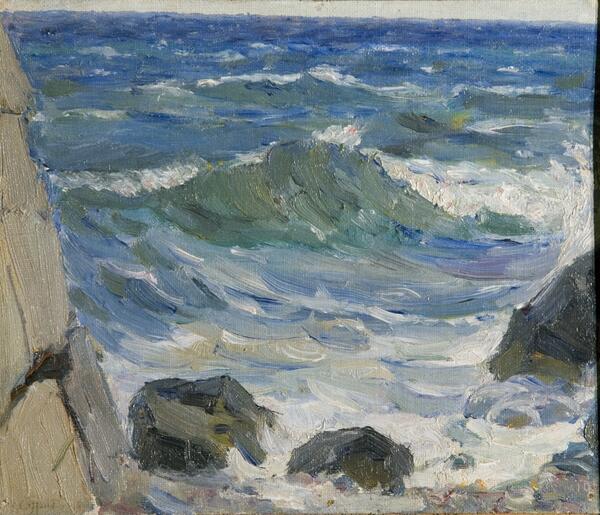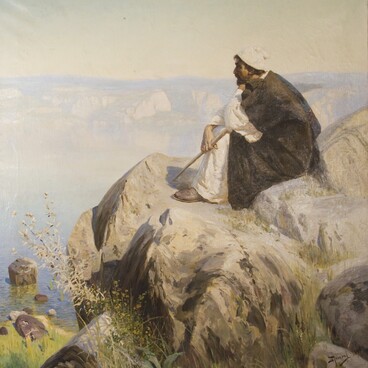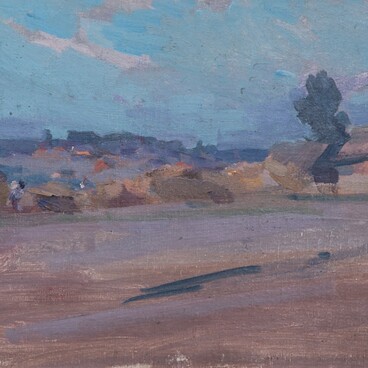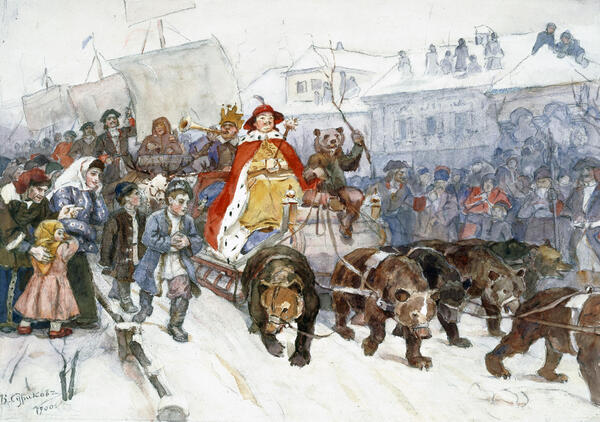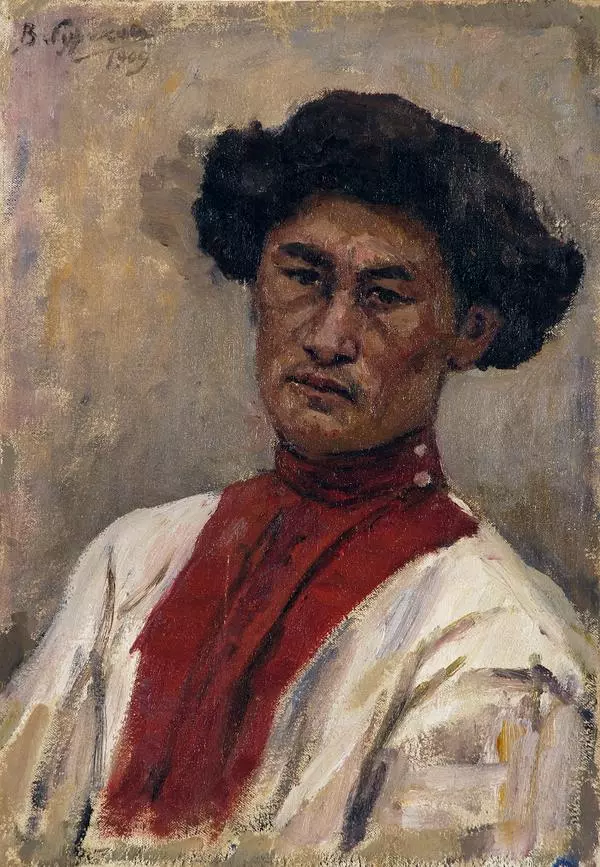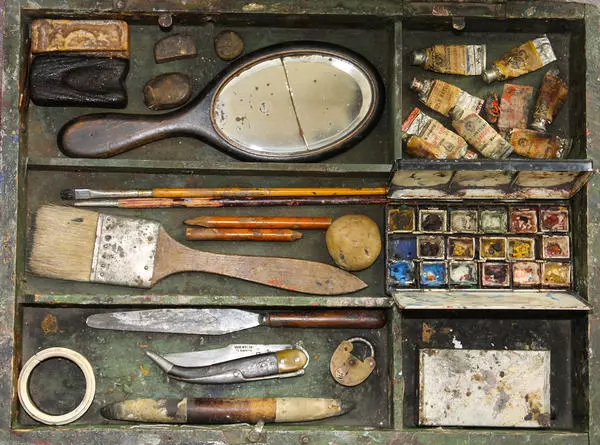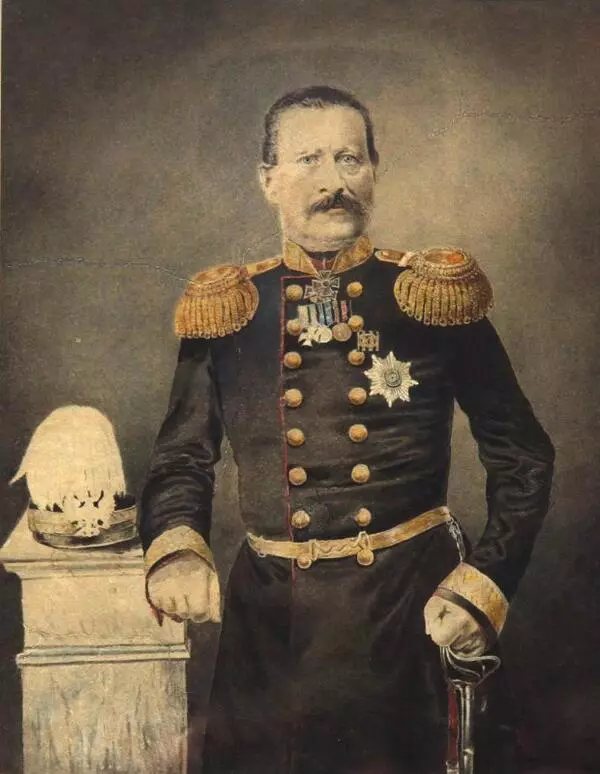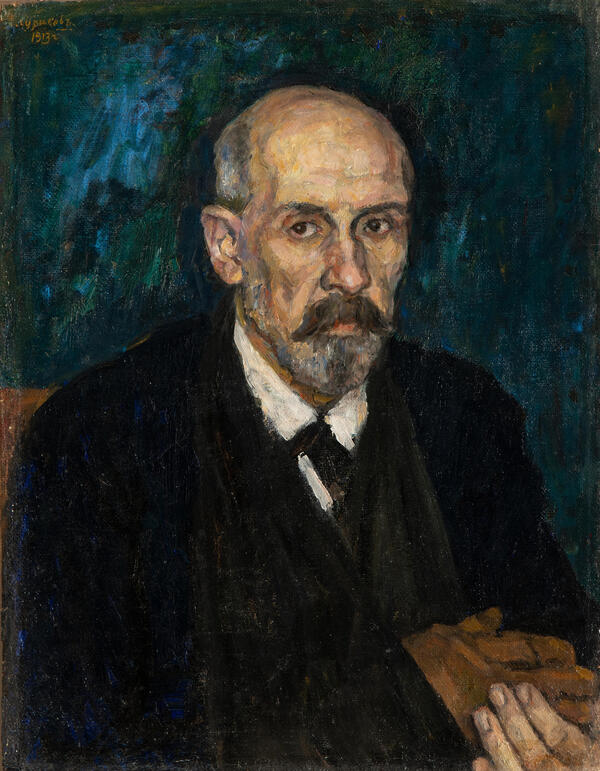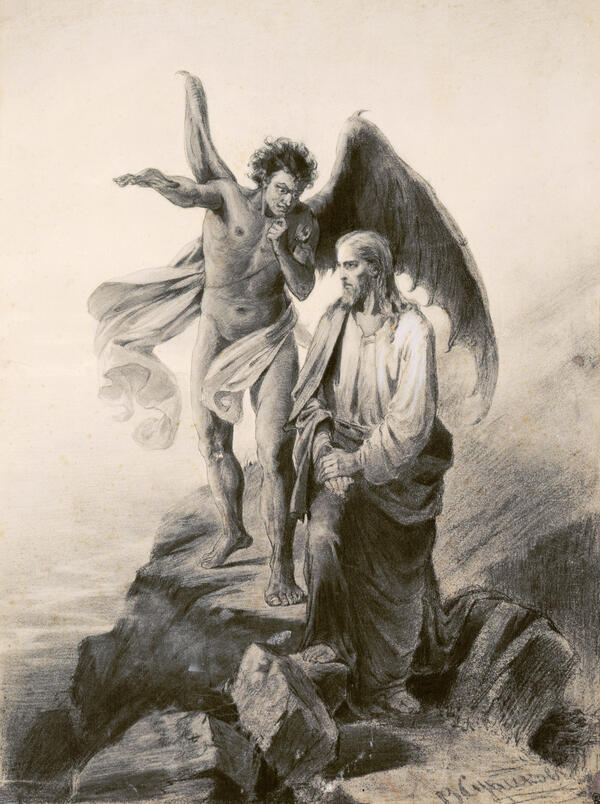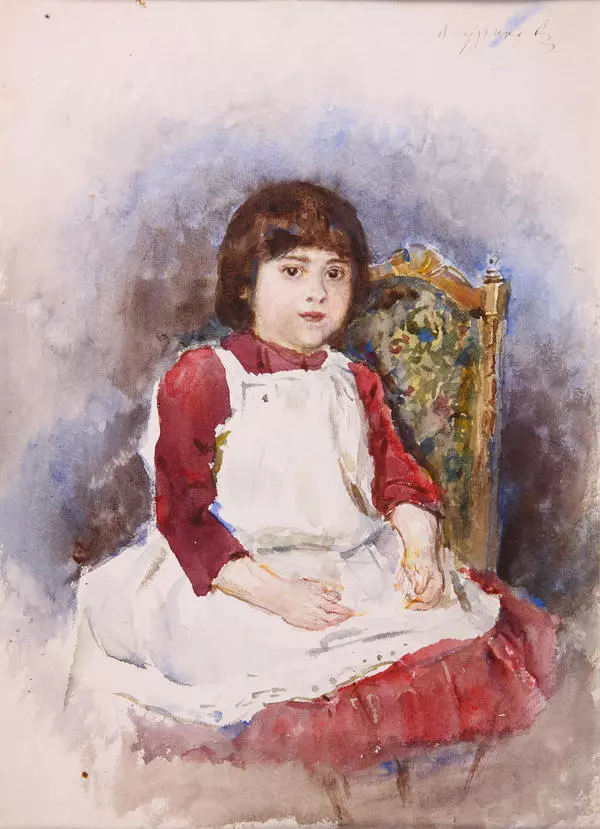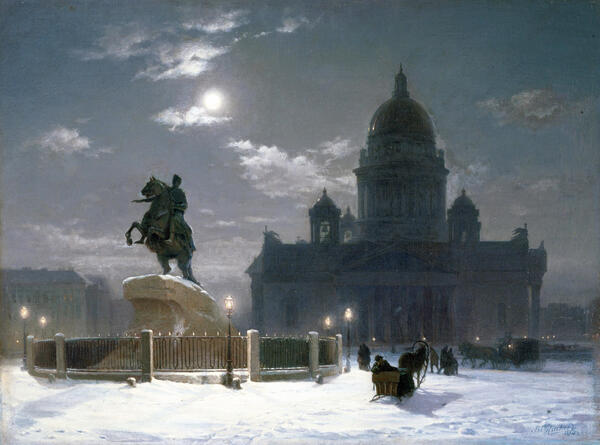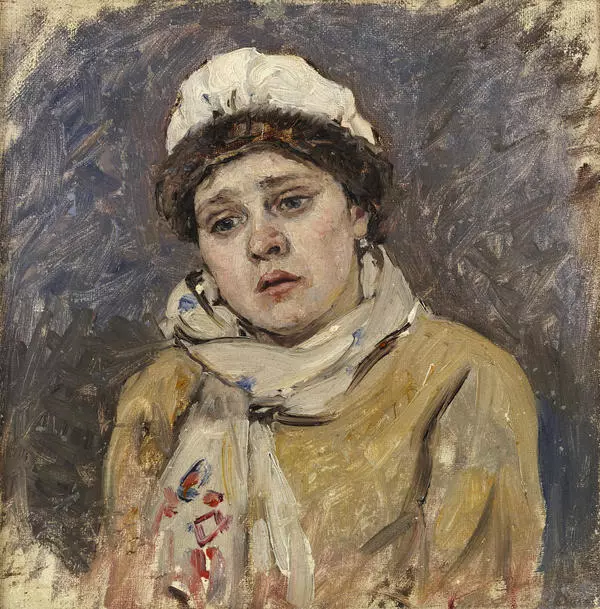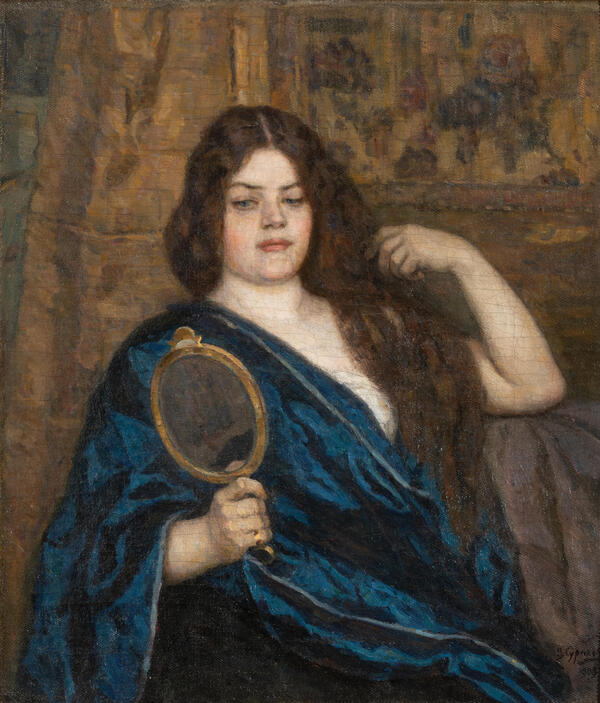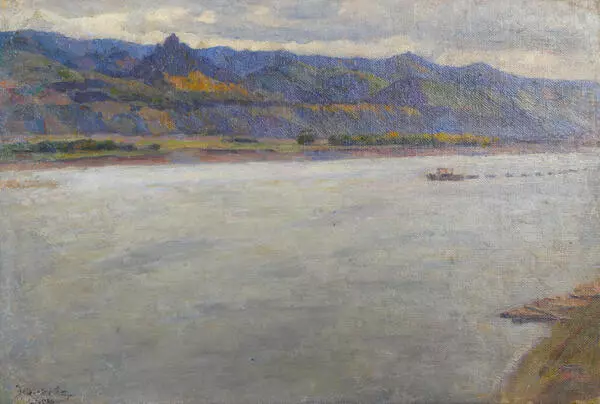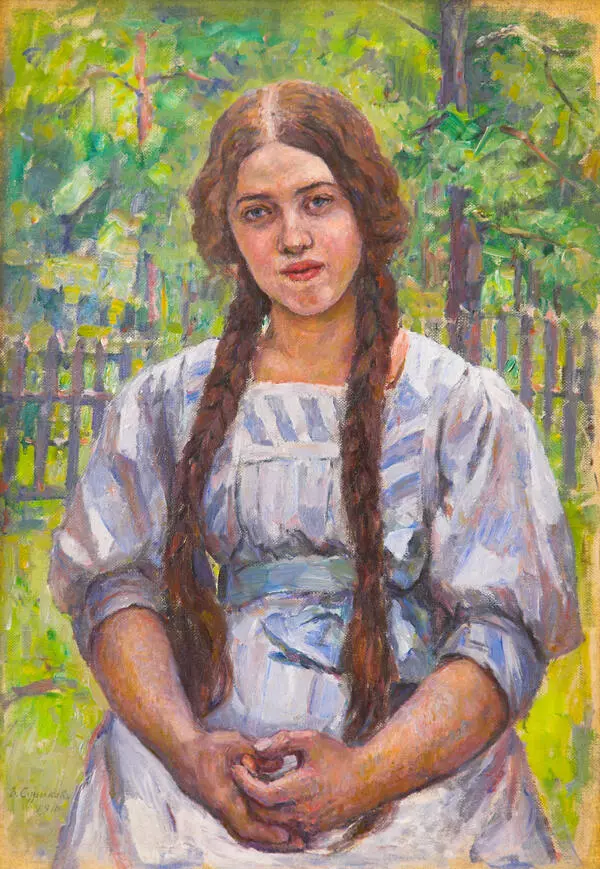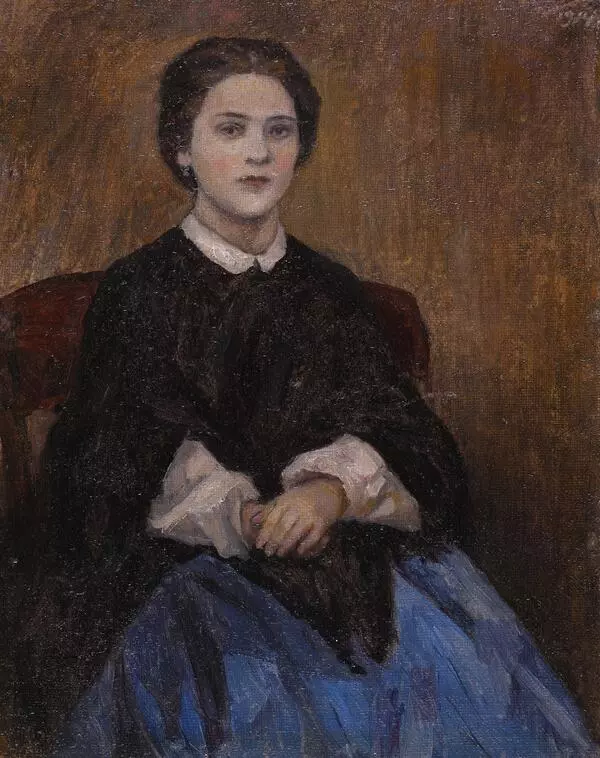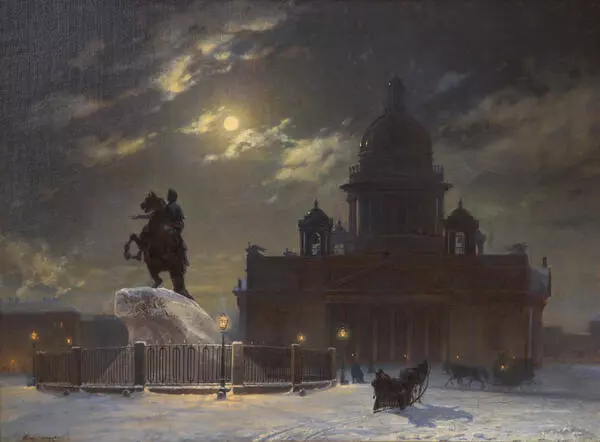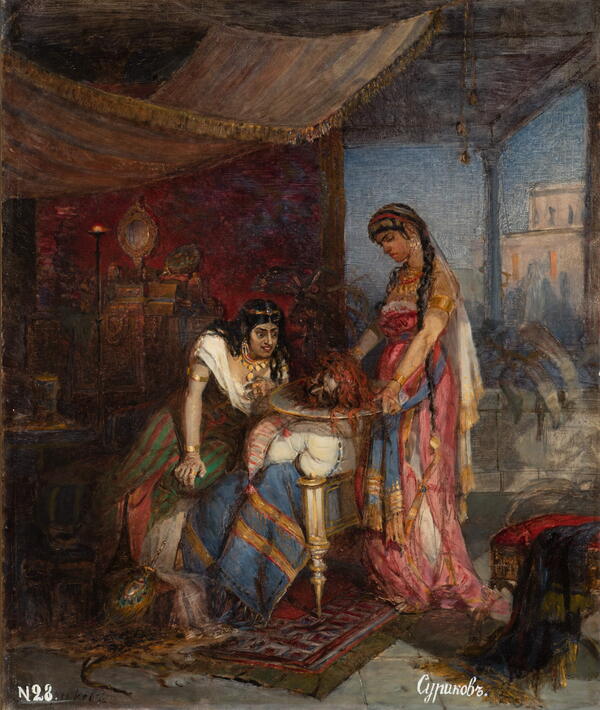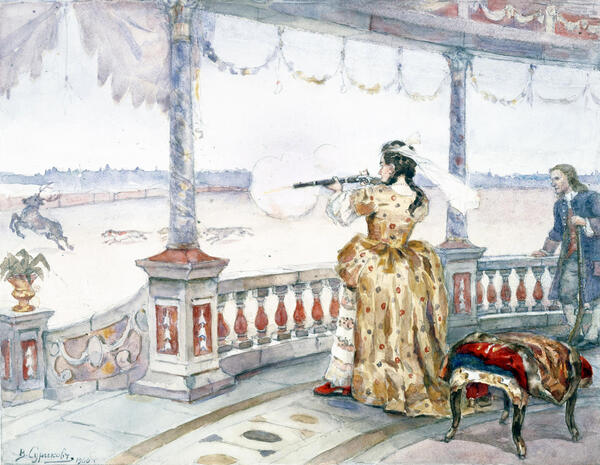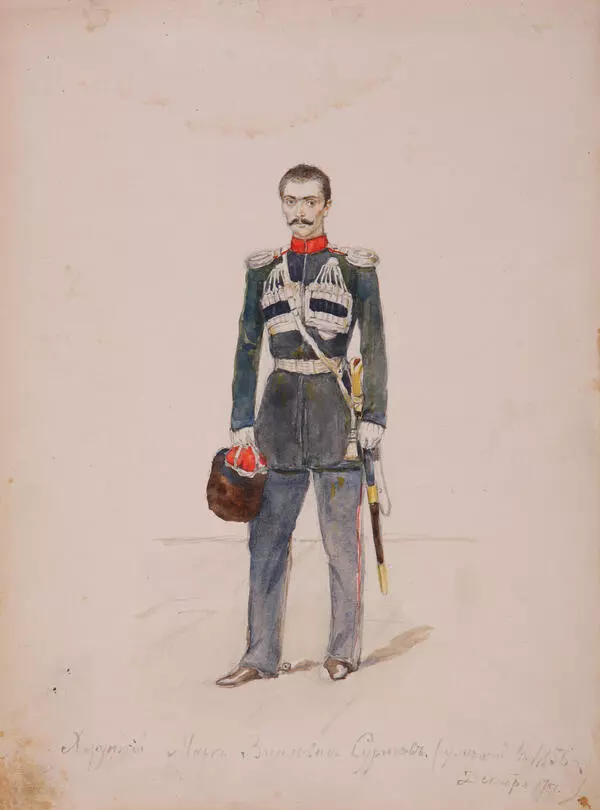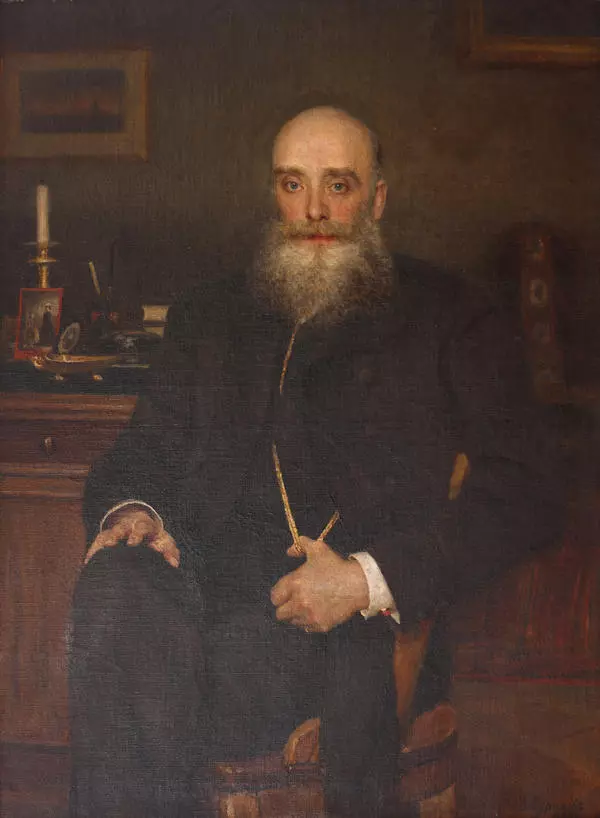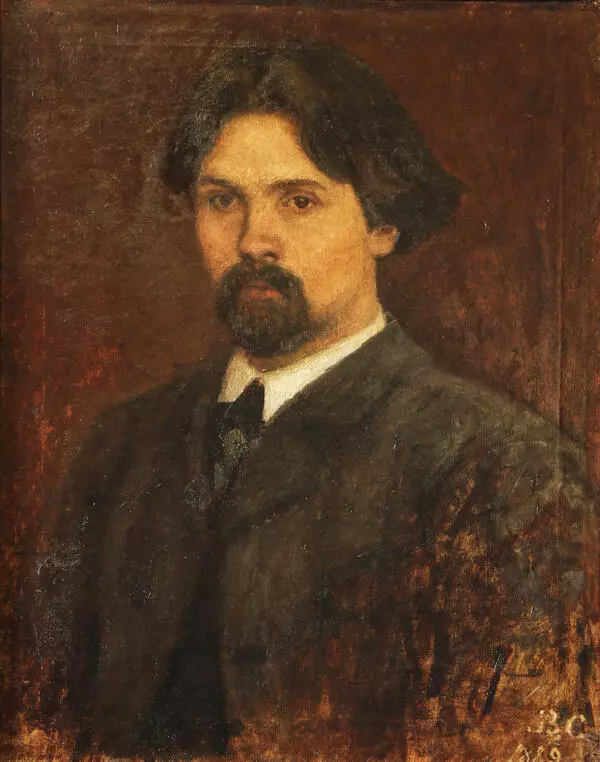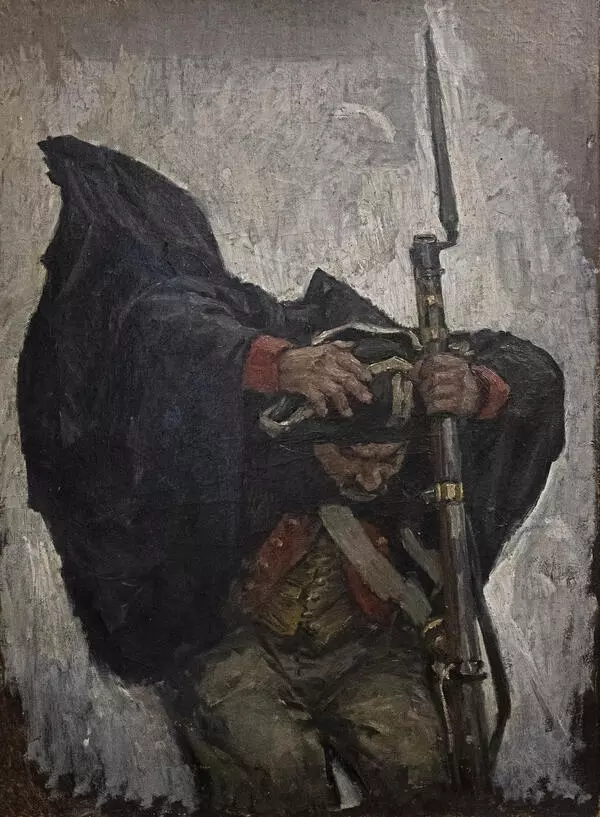The sketch of Vasily Ivanovich Surikov (1848-1916) “The Sea” was handed over the general museum fund of the country (Glavmuseum) after the revolution in 1921. The Russian artist Vasily Surikov is the greatest master of large-scale historical paintings. He was academician and full member ofthe Imperial Academy of Arts. He was born in Krasnoyarsk in a Cossack family. He got his first painting lessons at school. Already in 1862, the novice artist painted his first work — “Rafts on the Yenisei”. To get a full-fledged art education, Surikov leaves for St. Petersburg. There, in 1869, he entered the Academy of Fine Arts, and after graduating from the Academy he moved to Moscow.
The name of this artist is widely known from the monumental historical canvases exhibited in the central museums of the country: “The Morning of the Streltsy Execution”, “Boyar Morozov”, “Menshikov in Berezovo”, “Suvorov’s Crossing the Alps”, “The Conquest of Siberia by Ermak”. Alexander Benois called Surikov a brilliant clairvoyant of the past: “Only very rare artists, gifted with an almost prophetic, at least mystical ability, can take back in time, with an eagle’s eye to see past life in its dim twilight.”
The theme of water in Surikov’s major historical works is not often found (“The Conquest of Siberia by Ermak” and “Stepan Razin”). In the early 1900s, Surikov rested in the Crimea several times. So, the Crimea became an amazing discovery for Vasily Ivanovich, an inextinguishable delight. He writes from the Crimea to his relatives: “I always have a brush in my hands, ” “We rode back and forth on horseback from Sevastopol to Alupka, ” “In the morning I went to the beach, in the afternoon I had walks in the mountains, paintted sketches.” The artist was captivated by the free, vast sea and the gray peaks of the mountains. The artist took the notice of the ancient settlements and the people of those places. The artist’s granddaughter Natalia Konchalovskaya wrote about his first trip to the Crimea: “The Crimea seemed dazzling to Surikov, he enjoyed swimming, the sun, long walks in the mountains …”. He himself writes to his relatives that he always has a brush. He paints sun-drenched landscapes. “I painted 20 Crimean sketches, bright in colors”, “The sun is there all the time”.
In the “Sea” sketch, textured painting and energetic brushstroke convey the feeling of a strong moving water. The entire space is occupied by the water element, the waves monotonously rush and splash out on the rocky shore. In the foreground, a part of the rock and several large stones near the shore are visible. The water space extends to the horizon, and only a narrow strip indicates the sky at the top of the work. The painting has a cold tonality, the painting is pasty.
The name of this artist is widely known from the monumental historical canvases exhibited in the central museums of the country: “The Morning of the Streltsy Execution”, “Boyar Morozov”, “Menshikov in Berezovo”, “Suvorov’s Crossing the Alps”, “The Conquest of Siberia by Ermak”. Alexander Benois called Surikov a brilliant clairvoyant of the past: “Only very rare artists, gifted with an almost prophetic, at least mystical ability, can take back in time, with an eagle’s eye to see past life in its dim twilight.”
The theme of water in Surikov’s major historical works is not often found (“The Conquest of Siberia by Ermak” and “Stepan Razin”). In the early 1900s, Surikov rested in the Crimea several times. So, the Crimea became an amazing discovery for Vasily Ivanovich, an inextinguishable delight. He writes from the Crimea to his relatives: “I always have a brush in my hands, ” “We rode back and forth on horseback from Sevastopol to Alupka, ” “In the morning I went to the beach, in the afternoon I had walks in the mountains, paintted sketches.” The artist was captivated by the free, vast sea and the gray peaks of the mountains. The artist took the notice of the ancient settlements and the people of those places. The artist’s granddaughter Natalia Konchalovskaya wrote about his first trip to the Crimea: “The Crimea seemed dazzling to Surikov, he enjoyed swimming, the sun, long walks in the mountains …”. He himself writes to his relatives that he always has a brush. He paints sun-drenched landscapes. “I painted 20 Crimean sketches, bright in colors”, “The sun is there all the time”.
In the “Sea” sketch, textured painting and energetic brushstroke convey the feeling of a strong moving water. The entire space is occupied by the water element, the waves monotonously rush and splash out on the rocky shore. In the foreground, a part of the rock and several large stones near the shore are visible. The water space extends to the horizon, and only a narrow strip indicates the sky at the top of the work. The painting has a cold tonality, the painting is pasty.
